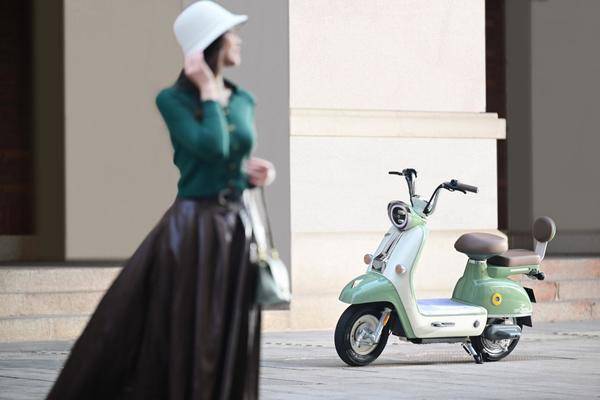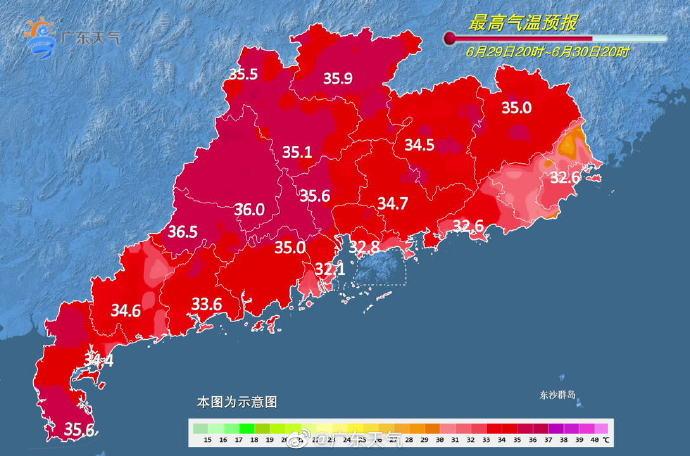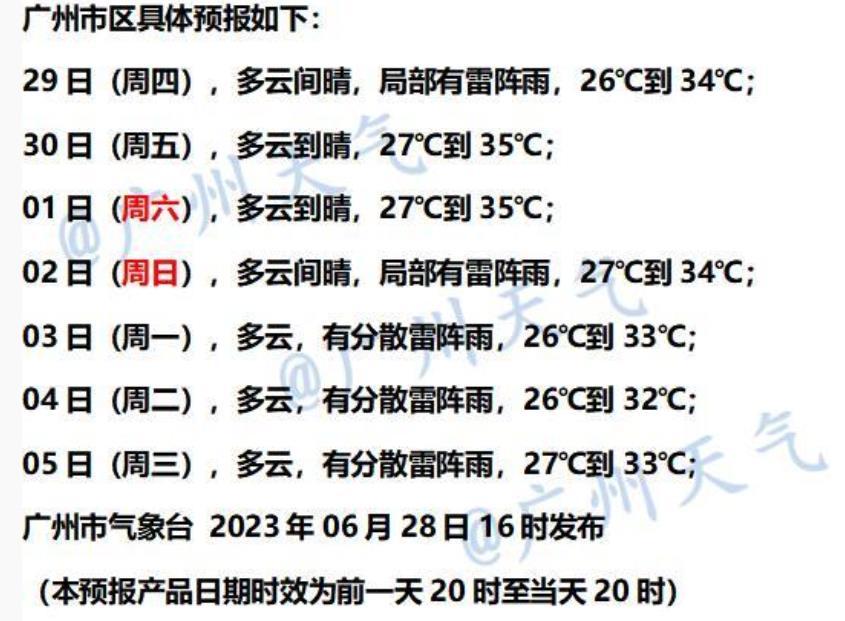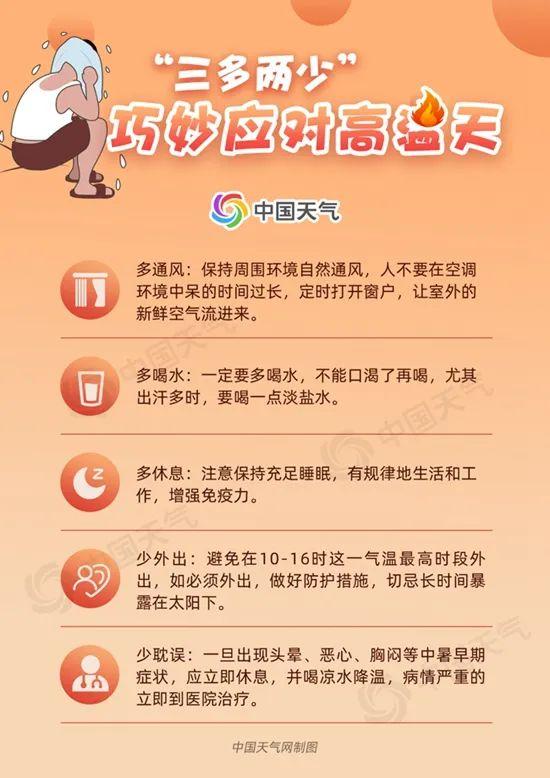"Extreme cold waves are more likely to break out."
After the "cliff-like" seasonal cooling during the National Day, a new round of cold air followed after the holiday, bringing strong winds, cooling and rain and snow to the central and eastern regions of China. According to the Central Meteorological Observatory, on the 10th, the impact of cold air was coming to an end. However, there were still moderate to heavy rains and local heavy rains in eastern Jilin and eastern Heilongjiang. There are sleet or small to medium snow in the northeastern part of Liaoning, the eastern mountainous area of Jilin and the southeastern mountainous area of Heilongjiang, and there are heavy snowstorms in the eastern mountainous area of Jilin.
Despite psychological preparation, the temperature drop in early October exceeded expectations, and some areas experienced record-breaking heat and cold overnight in winter. From blowing air conditioners to wearing long trousers, people can’t help wondering: Why did the cold wave come so early this year?
The temperature in many places in the south is "big diving"
On October 2, the Central Meteorological Observatory issued a blue warning of cold wave, which is the earliest cold wave warning issued in the second half of the year since the Central Meteorological Observatory officially launched the early warning release mechanism in 2010. From 14: 00 on October 2 to 20: 00 on October 6, the temperature in most parts of central and eastern China generally dropped by 8 ~ 12℃, and the temperature in central and eastern Inner Mongolia, Northeast China, most of Shaanxi, Huanghuai, Jiang and other places dropped by 12 ~ 16℃, and the local temperature dropped by more than 18℃.
When the cold wave in the north hit and the temperature dropped sharply, most areas in the south were still as hot as midsummer, and they were in the yellow warning of high temperature, with the local temperature reaching above 40℃. 470 national meteorological stations such as Hefei, Nanchang, Changsha and Hangzhou also broke the record of the highest temperature in October. It is understood that this is also the first time in history that two early warnings of high temperature and cold wave have been released at the same time.
When the cold air drives straight, the temperature in many places in the south "dives", and the temperature in some areas such as Anhui, Hubei and Jiangsu even drops by more than 20℃. First, it experienced the hottest in the same period in history, and then it experienced a "seasonal" cooling. Many netizens in the south said that it seemed to be a day from summer to winter.
After the National Day holiday, a new cold air continued to hit, which was accompanied by rain, snowfall and windy weather. From 8th to 10th, a new round of strong cold air will affect the central and eastern regions of China, and the lowest temperature in some northern regions will hit a new low since autumn. In addition to cooling, it also brings strong winds, rainfall and snowfall.
On the 10th, the impact of cold air came to an end, but there was still cooling and rain and snow in the northeast. On the 11th, the lowest temperature in Guangdong fell below 10℃, and the lowest temperature in most parts of the province hit a new low in the second half of the year.
This is a crisp autumn in October, and the cold air continues to exert its strength. Many places in China have "seasonal cooling". Why? Zhang Tao, chief forecaster of the Central Meteorological Observatory, analyzed that in the first half of the National Day holiday, the subtropical high was unusually strong and had a large influence range, and the highest temperature broke the historical extreme value in some parts of the north and south, showing a warmer trend on the whole. Under such circumstances, a strong cold air cut down from the low altitude of the subtropical high from north to south, the ground temperature dropped sharply, and the cold and warm air confronted each other, resulting in rainy weather along the Huaihe River, and the continuous rainy days led to the coldest day in the same period in history.
The recent frequent cold air activities will have an impact on the drought in the Yangtze River basin in China. Peng Jingbei, a senior engineer in lasg, analyzed that, on average, the precipitation in autumn in the Yangtze River basin is less than that in summer. Precipitation often occurs in areas where cold and warm air meet. When the cold and warm air forces are equal, it is easy to have continuous precipitation. However, since October, China has been hit by strong cold air one after another. On October 8-9, windy weather appeared in Beijing and other places, with gusts of 7-9 and local level of 10. Such a strong wind shows that the cold air is strong, and in this case, it is not easy to sustain heavy precipitation in the southern region. "In fact, on October 5-9, the temperature in the Yangtze River basin was more than 4 C lower than normal, but the meteorological drought in the Yangtze River and its south remained."
Will it be colder in winter?
After experiencing the latest high temperature warning and the earliest cold wave warning in history, many netizens are worried that autumn is already very cold, will it be colder this winter and will it experience extreme cold wave?
Earlier in September, the United Nations World Meteorological Organization (WMO) predicted that La Nina, which began in 2020, would last until the end of this year, which would be the first "triple" La Nina phenomenon in the 21st century.
In fact, as early as April-May this year, the Institute of Atmospheric Physics of Chinese Academy of Sciences used the scientific apparatus Earth System Simulator to predict that La Nina events will occur for three consecutive years in 2022-2023, and provided accurate prediction and early warning to relevant departments. In the spring and summer of 2022, the sea surface temperature in the tropical Middle East and Pacific Ocean has been in a relatively cold state all the year round, and the coldness has further intensified since autumn. The latest forecast results show that the current La Nina state will continue and develop in autumn and winter in 2022, reaching its peak in winter.
Will the influence of the new round of La Nina be greater than that of the past two rounds? Zheng Fei, a researcher at the Institute of Atmospheric Physics of the Chinese Academy of Sciences, said that it is impossible to judge at present. On the one hand, there are few examples of La Nina events for three consecutive years in history, so it is impossible to give a statistical conclusion; On the other hand, the intensity of this La Nina event will be in the category of moderate intensity, and how to develop and influence China’s climate in the future still needs to be predicted continuously to enhance its credibility.
At the end of September, Xiao Chan, deputy director of the National Climate Center, said at the regular press conference of China Meteorological Bureau that under the background of global warming, the frequency of warm winters has increased since 1986. In the winter after La Nina incident, there were years when the temperature was low. The main characteristics of the abnormal temperature in winter were: the temperature in most parts of the country was lower than normal, especially in northern North China, southern Northeast China, most of southern China, eastern and northern Southwest China, and most of northwest China. After the La Nina incident, the winter precipitation in China mainly shows as follows: a large range of precipitation is less, especially in the eastern part of Northeast China, along the middle and lower reaches of the Yangtze River, in the southern part of Southwest China, and in northern Xinjiang. There is more precipitation in the northern part of southwest China and the eastern part of northwest China.
However, Xiao Chan also pointed out that La Nina event is only one of the external forcing factors that affect China’s winter climate. China’s winter climate is also affected by Arctic sea ice, Eurasian snow and other factors, and the natural variability within the atmospheric system also plays an important role. The Meteorological Bureau will strengthen the judgment and provide more detailed forecast opinions in late October.
Zheng Fei believes that under the synergistic influence of La Nina event and the warm Arctic Ocean, the cold air activity in China is likely to continue to be strong this winter, and it is prone to staged low temperature and extreme cold events. At present, based on the warm Arctic sea temperature in the previous period and the possibility of La Nina events in the future, it is predicted that the temperature in some parts of northern China will be slightly lower this winter, which may lead to staged low temperature due to the influence of staged cold air, and the possibility of extreme cold wave outbreak is high; In some parts of the south, there is the possibility of disasters such as low temperature, freezing, rain and snow, so we need to be vigilant and raise our awareness of prevention.
Luo Jingjia, a national distinguished professor of Nanjing University of Information Science and Technology, also said in an interview with Modern Express that for East Asia, the winter under the influence of La Nina will be colder. However, the emission of carbon dioxide is increasing, and the degree of coldness may not be so obvious compared with the previous La Ni? a event, which may not cause a very cold winter, but its cooling may be reflected by the occurrence of a cold wave phenomenon. "Therefore, we should pay special attention to the number and intensity of possible cold waves this winter."
Expert: Extreme cold events tend to increase.
In the past summer, there were rare high temperature and heat waves in all parts of the northern hemisphere. Most parts of China are also shrouded in high temperature, and high temperatures above 40 C continue to appear in many places. Global warming, why is there a strong cold wave?
Many experts said that there is no contradiction between strong cold wave and global warming. It is in the context of global warming that the climate is more unstable, with the frequency and intensity of extreme weather events such as rainstorm, high temperature heat wave, drought and flood in summer, extreme low temperature and cold wave in winter increasing. For example, from December 2020 to January 2021, China suffered from extreme cold waves one after another, resulting in large-scale cooling and extreme low temperatures in many places.
Zhao Liang, a senior engineer in lasg, told China Newsweek that from the statistics of frequency, in the past 20 years, the number of cold wave days in winter in China showed a downward trend as a whole, but there was a great difference in time and space. Spatially, the reduction of cold wave days mainly occurred in the south, but the number of cold wave days in the north, especially in the northeast, did not decrease. In time, the frequency of strong cold waves is more in the first half of winter, and the reduction of cold waves is mainly concentrated in the second half of winter (February).
It is worth noting that since 2008, the average minimum temperature of the coldest winter period in eastern China, that is, the strongest cold wave events every year, is lower than that in the 1980s and 1990s, that is to say, the strong cold wave events have an increasing trend.
Zhao Liang further analyzed that the change characteristics of cold events in China are closely related to the important changes of atmospheric circulation and polar system in the northern hemisphere caused by global warming. Among them, the warming of the Arctic in winter and the cooling of the mid-latitude continent — — That is to say, the warm Arctic-cold continent phenomenon is an important change pattern. This phenomenon has an important connection with the outbreak of extreme cold events in mid-latitudes, including China, especially aggravating the strong cooling events in northern China.
"With the persistence of global climate anomalies, it seems that the extreme cold (cold wave) event in the northern hemisphere in winter has been ‘ Home-cooked meals ’ . But there is great uncertainty about where and when it will happen, "said Yao Yao, an associate researcher at the Institute of Atmospheric Sciences. The continuous increase of greenhouse gases has made the earth warmer and warmer, and the atmosphere on which human beings depend has become increasingly unstable. For the northern hemisphere, polar vortex will become unstable more easily in winter. Under the guidance of favorable atmospheric circulation system, cold air will break through the westerly jet barrier more easily and frequently, and then be transported to middle and low latitudes, causing extremely cold (cold wave) weather.
For the early warning of extreme cold events, Zheng Fei stressed that short-term weather forecast and climate trend forecast for more than two weeks should be strengthened to improve the prevention and early warning of freezing rain and snow disasters. At the same time, agriculture, animal husbandry, energy and transportation industries need to pay close attention to the early warning of freezing rain and snow disasters and formulate effective preventive measures and emergency plans.






